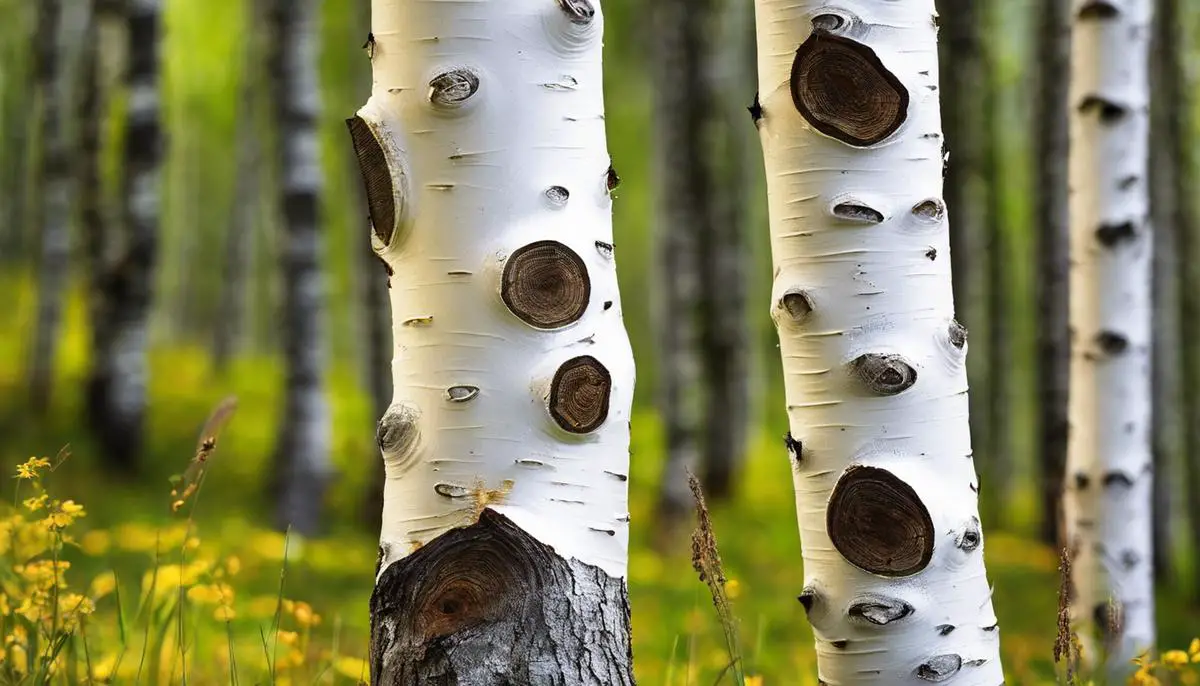
Birch sap, a natural product with a rich science-backed composition and myriad applications, offers a fascinating area of study. While it is often associated with simplistic folk remedies, an in-depth analysis reveals an intricate blend of sugars, organic acids, amino acids, minerals, and trace elements responsible for its unique health benefits and diverse applications. These characteristics, however, are not immutable, and are susceptible to subtle variations induced by the surrounding environmental parameters. This essay will also explore the harvesting techniques employed to extract birch sap and the associated technological advancements that aim to improve its quality, nutritional value, and sustainable extraction. As we delve further, we will scrutinize the distinctive health attributes, nutritional profiles, and the far-reaching industrial applications of birch sap, accentuating its versatile commercial potential.
The Science of Birch Sap
Seasonal Molecular Composition of Birch Sap
The phenomenon of birch sap flow signals the advent of Spring. As a critical life source for the birch trees, this transparent fluid displays remarkable variations not only in nutrient content but also in its molecular composition between different seasons.
We begin our examination with a fundamental understanding that birch sap, like other tree saps, consists primarily of water. However, this seemingly simplistic fluid carries a symphony of compound structures – micro and macronutrients, organic acids, proteins, enzymes, and a variety of phytochemicals, including sugars, amino acids, and phenolic compounds to name a few.
The major sugar found in the birch sap is fructose, often followed by glucose and sucrose. These sugars are synthesized through photosynthesis, stored during winter, and mobilized into sap during spring through the xylem, a tissue in the stem. The sugar composition, particularly, is understood to undergo changes over the annual cycle. One study reported the significant influence of season on the amount of total sugar in the birch sap, where spring season exhibited the highest content.
Another important component of sap – the amino acids – encompass a noteworthy element. Arginine, a semi-essential amino acid, is found to be the most abundant. The concentration of amino acids in the sap is influenced by the tree’s metabolic activity, which is driven by the season. Compared to the spring sap, the concentration of arginine, like other amino acids, was found to be significantly lower during the summer and autumn seasons.
Phenolic compounds, another group of phytochemicals, are essential for the tree’s defense mechanism. These compounds, while relatively lesser in volume, have shown to be higher in the spring sap as compared to other seasons. It’s interesting to note that, fluctuations in the levels of these compounds are likely linked to the plant’s adaptive responses to varying environmental stressors that occur throughout the year.
While the sap ions such as potassium, calcium, and magnesium are vital for many of the plant’s physiological processes, their concentrations in the sap were found to decline drastically from spring to summer. This phenomenon corresponds with the tree’s transition from mobilization of resources for growth in spring to conservation in summer.
There remains much to be understood about the underpinnings dictating the composition of birch sap. Many of these changes in sap composition are shaped by a complex interplay of internal physiological factors, interspecies variability, and external climatic conditions. Yet, the fluid serves as a fascinating microcosm, reflecting the cyclical journey of the tree through the seasons. It is these intricate patterns and changes at the molecular level that ultimately contribute to the sustainability and resilience of birch trees over time.

Harvesting and Extraction Methods
Turning now, with a meticulous gaze, to the pragmatic topic of harvesting and extracting birch sap, it’s impossible to understate the precision and care that is required in this process. Cultivating these techniques is essential for supporting the continuity of these majestic trees and for unlocking the rich bounty which they hold.
Predominantly, there are two key techniques used for birch sap extraction: the tapping method and the bag method. These are not so much separate entities, as they are holistic parts of the same endeavor.
In the tapping method, a radial groove in the upper bark layer, not exceeding 1-2cm deep, is initially made. Taking care not to damage the sensitive phloem layer is of paramount importance, as this can turn the tide of survival for the tree. A small spout or tube is then inserted, channeling the downward flow of sap. This technique, though prevalent, requires assiduous application to prevent bark injury and potential disease exposure.
The bag method takes a divergent path from tapping, though embodies the same respect for the tree’s integrity. Here, a bag is tied around a branch, which is then severed. The sap, in its aim to heal the tree, gathers in the wound, and slowly begins to drip into the bag. The attraction here is the minimization of tree damage, though this technique may yield less volume due to the reduced surface area exposed.
A more modern variation of the bag method has been seen in recent years, employing vacuum pumps to aid in sap collection. This addition can potentially increase yield significantly, but it brings with it a far higher risk of causing undue stress to the tree, and must be navigated with careful attention to the response of the tree.
Fundamentally, extraction techniques must give precedent to tree health and sustainability, over rapid and voluminous sap harvesting. Missteps in these processes can have long-lasting, even perhaps irreversible, effects on the tree and therefore the ecosystem in which it thrives. Amplifying these techniques with novel technologies and iterations must be weighed against their impact on the birch.
In the act of harvesting birch sap, the seemingly straightforward task is awash with nuance. This precious, life-sustaining fluid is a gift from nature’s own laboratory, but it demands meticulous stewardship to ensure not just the immediate yield, but the long-term sustainability of this incredible tree species.
Advancements in extraction techniques are being explored, joining hands with the potential advent of biogenetic markers that might assist in identifying optimal sap flow windows. As we press forward, bearing the mantle of responsibility for preserving these magnificent trees and their sap, we must ensure that our techniques evolve not for our ease, but for the betterment of the birch tree and the environments that they anchor. After all, in the grand scheme, we are but temporary custodians of nature’s vast wonders.

Health Attributes and Nutritional Profiles
With in-depth knowledge about the unique composition and changes of birch sap discussed, we focus now on an equally critical domain of how and why precise and thoughtful sap extraction techniques are vital. Birch sap, a promising and highly nutritional resource, requires meticulous handling and extraction, which ensures the sustained health of birch species and concomitant maintenance of ecosystems they support.
Firstly, let us delve into to the two prominent techniques utilized for sap harvesting: the tapping method and the bag method. The tapping method involves creating a groove or opening in the tree’s outer bark and inserting a specially designed spout or tube. This allows the sap to flow out and get collected without causing significant harm to the tree, given the extraction is done responsibly and less often.
On the other hand, the bag method involves fastening a bag around a severed branch to collect the sap that bleeds from the fresh wound. Both methods have their merits and are devised to minimize tree trauma, allowing for sustainable extraction.
Nevertheless, modern variations to these techniques employ vacuum pumps to expedite sap collection and improve yield. It generates negative pressure, driving the sap upwards and outwards more rapidly. However, one must bear in mind, while it does yield more sap, there is an elevated risk to tree health. Accelerated extraction can stress the tree and potentially lead to debilitating infections, making this tool a double-edged sword that requires careful management.
Henceforth, it can’t be overstated enough that tree health and sustainability should always be paramount in deciding extraction techniques. Missteps or shortcuts in extraction processes may not only result in reduced sap quality but also adversely impact the trees and the broader ecosystems they underpin.
In recent years, research explorations have opened fresh avenues in the form of advancements in extraction techniques and identifying biogenetic markers. These markers can guide the timing and extent of sap extraction, minimizing the chance of inadvertent harm escalating the overall efficacy of sap collection.
Ultimately, from an ecological and longevity perspective, meticulous stewardship is necessary to ensure the long-term sustainability of birch trees and their sap. The burgeoning potential of birch sap, while promising, must be tempered with a deep respect for the integral role these trees assume in our ecosystems, thus decisively adopting an avenue fostering durability.
Thus our foray into the complex world of birch sap concludes, leaving us with a keen understanding of its unparalleled nutritional profile, its variance across species, and a heightened awareness regarding the methods of its extraction. This encapsulates our proposed strategy towards harnessing the multitudinous benefits birch sap offers. Steered by care and foresight, we can reap these benefits while extending unwavering support to the conservancy of both individual birch trees and entire birch forests.

Industrial Uses and Commercial Applications
Continuing on, the commercial applications of birch sap have long been recognized and capitalized upon in various industries, spurring exciting developments in several sectors.
The food industry is one of the principal beneficiaries of these developments. Birch sap is readily consumed fresh, but it can also be processed into an assortment of products. It is a key ingredient in several fermented beverages, including wines and beers, where its unique flavor profile imparts distinctive notes to these products. In the health-focused food market, birch sap serves as a natural sweetener and replaces traditional sugars in syrups, teas, and coffees. Its high mineral and amino acid content makes it highly regarded as a wholesome and health-promoting ingredient.
Pairing well with its use in the food industry, birch sap is also highly valued in the health and wellness sector, touted for its therapeutic benefits. Traditionally, it has been used for treating various ailments, such as renal disorders, liver diseases, and rickets. Today, it is a popular ingredient in functional foods and dietary supplements, thanks to its rich mineral, amino acid, and antioxidant content that promotes overall health.
Furthermore, the cosmetics industry has discovered birch sap’s potential. Its moisturizing properties and rich mineral content make it an ideal ingredient for skincare and haircare products. Birch sap is integrated into facial toners, serums, and creams, providing hydration and enhancing skin elasticity.
Innovative applications in the agricultural sector also exist. Owing to its phytonutrient content, birch sap is used as a bio-stimulant to improve the growth and development of other plants, offering a natural and environmentally friendly option for crop enhancement.
Meanwhile, the energy sector has also begun exploring birch sap’s potential. The sugars it contains can be processed into biofuels, offering a renewable energy source and a potentially promising direction for sustainable energy production.
Finishing with this industry sweep, one must ponder upon the prospects ahead. The myriad benefits of birch sap and the diversity of its applications hold immense potential for its use across sectors, contributing to economic growth and providing ecological benefits. However, this potential comes with an important caveat. As industries continue to harness birch sap, rigorous research must also be directed towards developing practices that reduce impact on existing birch populations to ensure we do not compromise the survival and well-being of the very species that underlie these precious resources.
Being a veritable treasure chest of manifold benefits, birch sap indeed constitutes a niche, yet burgeoning area of scientific study and commercial exploration. Its potential applications go beyond current understanding, opening avenues for further research in the quest for sustainable utilization of natural resources.

Taking everything into account, it becomes apparent that the potential of birch sap extends far beyond its current applications. Its superior nutritional value and medicinal properties as well as its industrial versatility warrant in-depth, continuous investigations to reap more benefits. Even with the advancements in the harvesting technology and extraction methods, there is space for more developments to ensure that the process is sustainable and retains the sap’s highest possible nutrient value. In a world that’s gradually shifting towards natural, eco-friendly products, birch sap offers an invaluable resource with manifold applications warranting further innovation and research.



